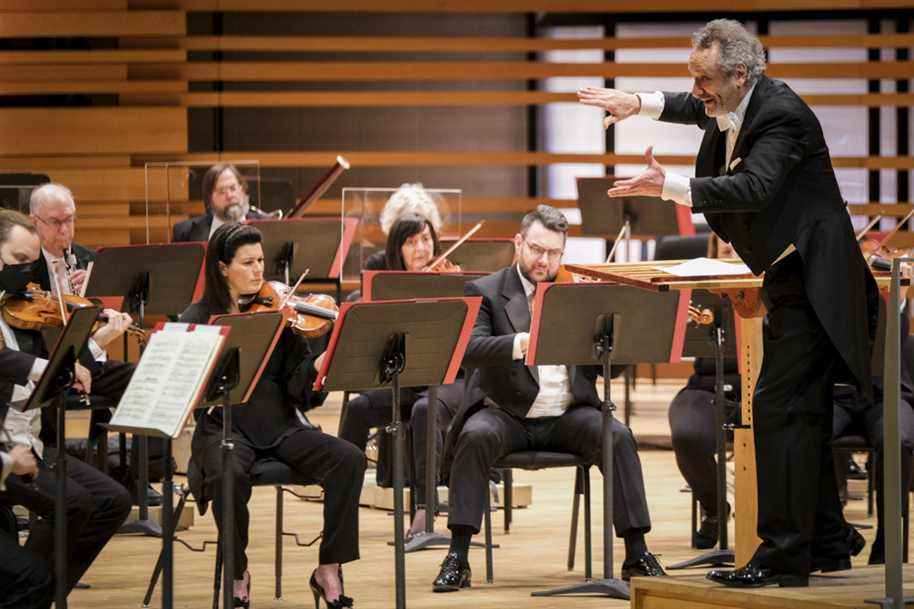It was time. After two months of unbearable silence, the Orchester symphonique de Montréal has found its audience, two days after the locks of the concert halls were lifted. It was the French chef Louis Langrée who officiated for this long-awaited ceremony. The magic worked.
Posted at 9:00 a.m.
The assembly is obviously modest, with some 500 people allowed. However, this is a definite advantage for access to the Maison symphonique, which is much smoother than in December.
Once in the room, the distanced but regular disposition of the spectators gives us the impression of a good crowd. All are masked, of course, except the musicians. On stage, only a few plexiglass panels testify, here and there, to the pandemic which is still raging.
It is through the soft volutes of the solo flute from the beginning of the Prelude to the Afternoon of a Faun of Debussy that concert music enters our lives again after two months of scarcity.

PHOTO SARAH MONGEAU-BIRKETT, THE PRESS
Some 500 people were able to attend the OSM concert at the Maison symphonique.
Langrée knew Debussy well, whose opera he occasionally conducted Pelléas and Mélisande. It feels. The gesture is fluid, despite the need to often break down the measure to 9/8. Without rushing, he takes the time to make the different motifs sing, to dose the unique sound alloys contained in the score.

PHOTO SARAH MONGEAU-BIRKETT, THE PRESS
Violinist Simone Lamsma
We then left France for Hungary. Violinist Simone Lamsma gently enters the stage. The first notes of the initial fugue of the Violin Concerto noh 1, Sz 36, by Bartók are played by the Dutchwoman like a distant whisper.
The different sections of the orchestra are then added gradually, without abruptness, in a flexible but implacable tempo. The music is as severe as it is full of emotion.
Then the restraint gives way to something else. Mme Lamsma reveals herself to be a true feline in the second and final movement. The vibrato widens and the violin quickly fills the whole room. The indication “allegro giocoso” (cheerful and playful) would undoubtedly have called for a little more playfulness in the orchestra, which would have benefited from a truly marcato game. This is done, just listen to the Stern-Ormandy version.
Remarkable introduction
Return to the orchestra alone to finish the concert with the Symphony no 7 in A major, opus 92, by Beethoven. Louis Langrée does not bother too much with musicological considerations. He just makes music.

PHOTO SARAH MONGEAU-BIRKETT, THE PRESS
The conductor Louis Langrée greets his audience.
The introduction to the first movement is remarkable. Quite fast at the start, the tempo adapts to the different elements of the musical discourse. The fast section is exhilarating at will.
In the famous Allegretto, Langrée adopts a rather moderate tempo, avoiding the rapidity of certain “historically informed” conductors. Everyone has time to sing, and we thank him for it.
As with the final movement of the Bartók, the third movement would have been more interesting a bit faster (and with more present oboe entries). Like many of his colleagues, the conductor marks each note of the main theme a little too much, restricting the horizontality of the line a little. Again, there is a way to add a little more spice. Carlos Kleiber did it with the Vienna Philharmonic, and that’s something.
Langrée makes up for it magnificently in the final Allegro, a rolling fire that sweeps away everything in its path.
After the warmest applause, we can only agree with our neighbor in the seat: “That feels good! »
